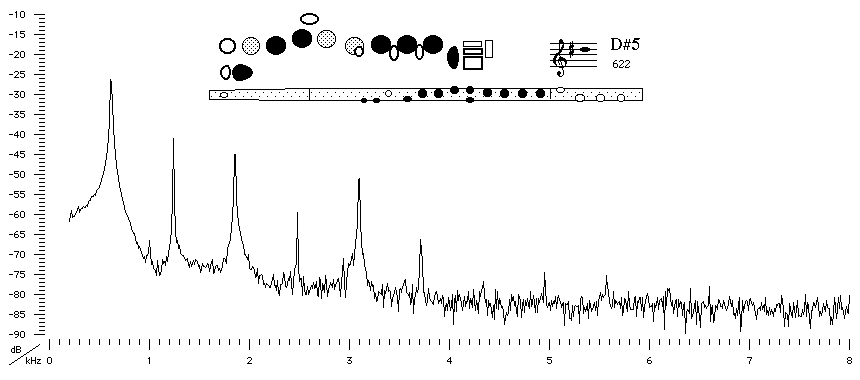| Acoustics of baroque, classical and modern flutes |
modern flute
|
D#5 |

|
Fingering Acoustic schematic Non-specialist introduction
to acoustic impedance |
This fingering is comparable to that for D#4 except for the open register hole. This creates a pressure node (or flow antinode) at the midpoint of the pipe, and thus allows D#5 but not D#4. Compared with the D#4 impedance spectrum, the low frequency minima are less deep, and at considerably higher frequency.

Sound spectrum
of a modern flute with a B foot played using fingering for D#5.
![]()
![]()
![]()
![]()
![]() You can hear D#5
played by Geoffrey Collins.
You can hear D#5
played by Geoffrey Collins.
| Acoustic measurements are available for these flutes - modern B, modern C, classical C, classical D, classical flared, baroque Sound clips are available for modern B, classical flared and baroque |
To compare flutes, it is easiest to open a separate browser window for each instrument. |